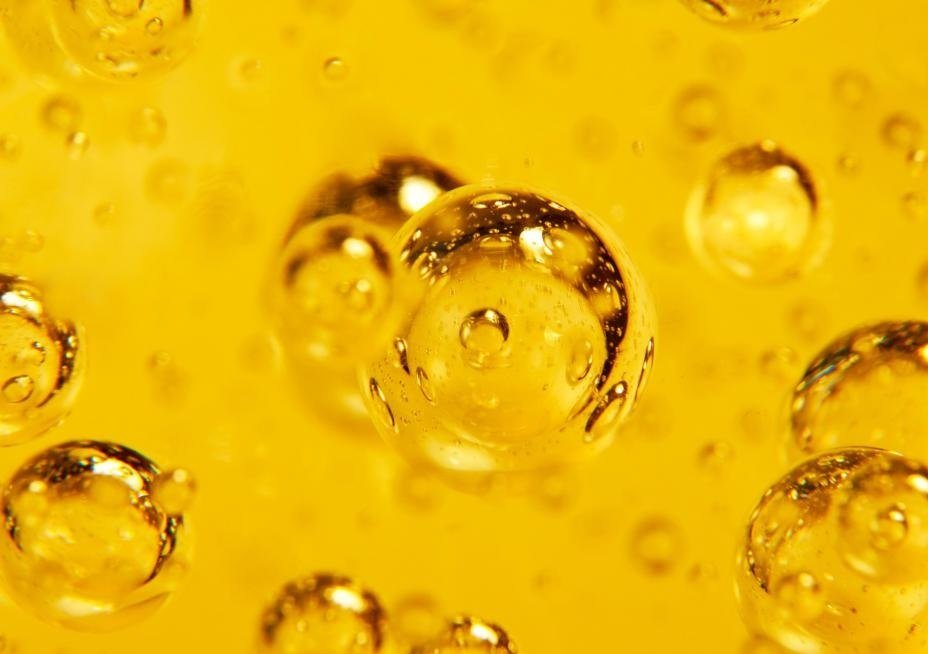Since When Is Cotton a Vegetable?
I'm reading Dr. Mercola's new book, Fat for Fuel, and am really excited by the insights it provides about fat... One thing that was eye-opening to me was the history of cottonseed oil. Here's a short excerpt:
The History
In the late 1800’s, the majority of Americans were farmers or lived in rural communities that depended on farmers for their food. The majority of foods on American tables were whole, unprocessed, and locally grown. Interestingly, that made them organic as synthetic fertilizers and pesticides had not yet been introduced.
Cottonseed oil, before appearing in American kitchens in the familiar Wesson bottle, was a waste product of the cotton industry that was used primarily in soap and as fuel for lamps. But as electricity became more available and affordable during the early 1900’s, manufacturers had a glut of cottonseed oil on their hands—an ample supply in search of demand.
Cottonseed oil in its natural state is cloudy and has a red tint due to the presence of gossypol, a naturally occurring phytochemical that is toxic to animals. (See, God knew what he was doing in creating plants with defense mechanisms.)
This required that manufacturers develop a deodorizing and bleaching process to make cottonseed oil palatable as a food product.
PUFA - Wha?
Cottonseed oil wasn’t only unpalatable in its natural state. It came with serious health issues due to the fact that it, like nearly all vegetable oils, is a polyunsaturated fatty acid (PUFA). Without boring you with the chemistry details, let me assure you that eating too many PUFAs poses a health hazard! They become incorporated into your cell membranes and because these fats are unstable, your cells become fragile and prone to oxidation, which leads to all sorts of problems, such as chronic inflammation and atherosclerosis.
These unstable oils also are prone to going rancid with no shelf life. This made them less appealing to food manufacturers.
Back to the history....
In 1907, the Cincinnati-based SOAP company Procter & Gamble was approached by Edwin Kayser, a German chemist who claimed he had developed a process for making liquid fats solid and shelf stable. The company purchased the U.S. rights to the process and began experimenting, at first in search of a way to make cheaper and more appealing-looking soap.
Once hydrogenated cottonseed oil was developed, P&G realized it had the same luminous white look as lard, which was the most popular cooking fat at the time.
Why not sell it as a cooking fat? In 1910, P&G applied for a patent for CRISCO-hydrogenated cottonseed oil, what we know today as a transfat—and the shift away from animal fats to industrially processed vegetable fats began in earnest.
When Procter & Gamble debuted Crisco in 1911, they introduced it to the public as “the ideal fat,” notable for its “purity” and for being “absolutely all-vegetable.” As a result of these marketing efforts, sales jumped from 2.6 million pounds in 1912 to 60 million pounds four years later.
You see, today we struggle with marketing words like “organic” and “natural”—words that are not regulated by the FDA. But “ideal,” “pure,” and “absolutely all-vegetable” are not regulated either.
(Remember when Doctors endorsed cigarettes?)
Did you grow up in a household with a can of Crisco? Did you even know what it was?
My point is this: Have you ever eaten a cotton ball? Why was the American public sold this idea of cotton as a vegetable?
Canola Oil
The same story of overabundance of a waste product being turned into a food product has been repeated with Canola Oil—or as it is formally called “rapeseed oil.” The American government continues to subsidize Canadian farmers for production of rapeseed. And that story goes back to WWII, when we needed rapeseed oil as a lubricant for our naval and air force machinery.
These oils are Omega-6 fatty acids and at the root of all our chronic inflammation. What and where is inflammation found? Well, it could be joint inflammation, one that most of us are aware of and experience. But it also includes gut (small intestine and large intestine) inflammation. Our skin is also damaged by excessive Omega-6 fatty acids. How about arterial inflammation? Brain/neural inflammation?
The unfortunate truth, is that cottonseed oil and other so called vegetable oils are cheap to produce, and are found in everything packaged today. From cookies, crackers, breads, to popcorn, and frozen foods. As a result, the American public now eats Omega-6 to Omega-3s in a ratio of 30:1. And that is where trouble begins.
You must get diligent about reading labels.
Now is the time to reduce your risk of chronic disease and inflammation by significantly reducing your intake of Omega-6s, and increase your intake of Omega-3 fatty acids. We want a ratio of Omega-6s to Omega-3s of about 2:1.
Examples of Omega-3s:
Marine algae and phytoplankton are primary sources of omega-3 fatty acids.
Common sources of plant oils containing the omega-3 ALA fatty acid include:
walnut
edible seeds
clary sage seed oil
algal oil
flaxseed oil
Sacha Inchi oil
Echium oil
hemp oil
Sources of animal omega-3 EPA and DHA fatty acids include:
fish
fish oils
eggs from chickens fed EPA and DHA
squid oils
krill oil
Our body is a symphony and all the players in the orchestra must be in place for beautiful music to be played and heard. Omega-3 and Omega-6 or better known as essential fatty acids, work in harmony with Vitamin D3, K2 to prevent inflammation and osteoporosis.
Are you taking a supplemental fish oil? If so, which one? Many are already rancid before they hit the store shelves. And just as in an orchestra, the other players must be there. Vitamins D3 and K2.
If you would like some suggestions, click below to book a free consultation!
An Offer for Health-Savvy Women
Schedule a FREE 30-minute consult with Leslie to see how you can live with LIMITLESS VITALITY every day!



